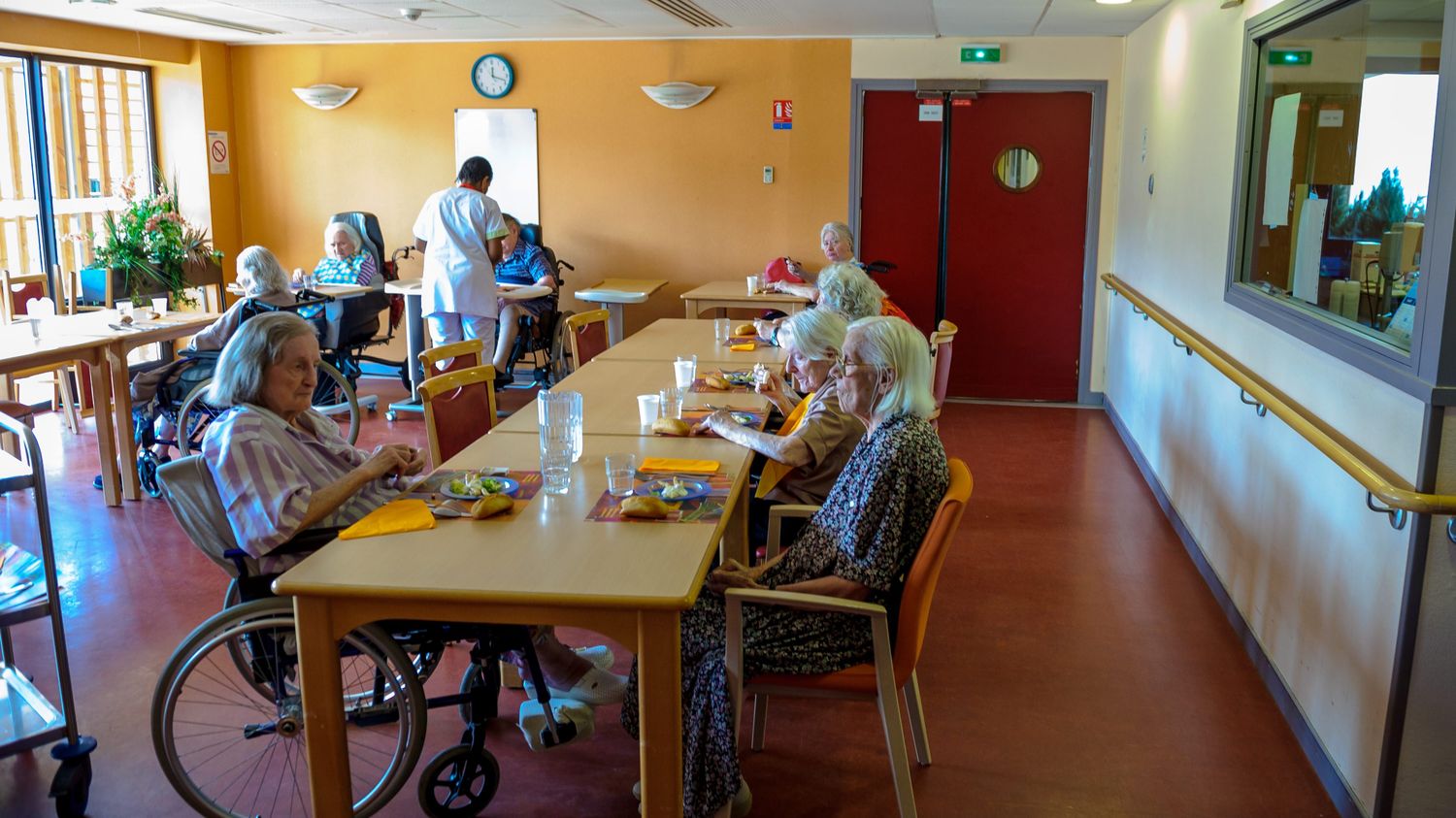According to a survey of “60 million consumers” published Thursday, only a quarter of nursing home residents finish their plate. “Mixed” dishes in particular have “no taste” according to respondents.
According to a survey carried out by 60 million consumersthe consumer defense media, published Thursday October 26, the quality of meals in nursing homes in France sometimes leaves something to be desired. For this survey, 255 residents responded on different aspects of their meals. First, they are perceived as “fairly balanced”according to the responses, although some note that there is “generally more starchy foods than vegetables”. This is explained in particular by the fact that “very few nursing homes have their own dietitian”explains Annick Ruffat, dietitian, to the monthly magazine.
On the taste aspect, however, the responses are rather negative, especially when it comes to dishes “mixed”, offered in case of chewing or swallowing problems. They are qualified as “unappetizing”, “without any taste”, “unidentifiable foods”, by the respondents. Beyond the quality of these meals, the investigation highlights that, sometimes, they are mixed systematically, without prescription by a speech therapist.
Faced with the taste or even the quality which sometimes leaves something to be desired, 60 million consumers reveals that a “Only a quarter of residents finish their plate, 53% finish it ‘sometimes’ and 21% ‘never'”.
“Not eating or eating poorly leads to malnutrition. This increases the risk of falls and limits your immune defenses. So you are prey to lots of infections.”
Sylvie Metzelard, editor-in-chief of the magazine 60 million consumersat franceinfo
“In some nursing homes, things go better than in othersrecognizes Thursday on franceinfo Sylvie Metzelard, editor-in-chief of the magazine 60 million consumers. There is a little more money, integrated kitchens and sometimes efforts are made.” But overall “Nothing has changed”despite a report from the Defender of Rights in 2021.
The question of meal times is also highlighted. The responses obtained during the survey indicate more or less the same thing: breakfast served between 7 a.m. and 10:30 a.m., lunch between 11 a.m. and 1:30 p.m., and dinner between 6 p.m. and 6:30 p.m. In 75% of cases, the maximum 12 hours of fasting recommended by geriatricians “turn out to be outdated”concludes 60 million consumers.
There is a shortage of staff to help residents eat
Also, in a third of the cases recorded, only one person is present throughout the meal to help residents who have difficulty getting food to their mouth. Which means that 87% of respondents have to wait for many minutes before being able to start eating. An observation which can be explained, among other things, by the lack of staff in the dining room and in the kitchen: six people for ten residents.
However, 60 million consumers recalls the financial constraints of these establishments, which must, for the most part, provide meals for a full day for less than six euros, or even three euros, according to certain testimonies received. “You can’t work miracles to ensure all these meals”, underlines Sylvie Metzelard. Pascal Champvert, president of the AD-PA (Association of directors serving the elderly) defends himself by explaining that it is all the more difficult to offer quality meals when “we have 11% inflation on food products. C This amounts to requiring the manager to save on everything, rusks, yogurts, the weight of portions of meat, etc….”adds the latter.
This survey was carried out by the comparative testing center of the consumer defense journal 60 million consumers , by distributing a form of around thirty questions on the various networks of the National Consumer Institute, between June 6 and August 16. 255 responses were used, 77% of them from women. The residents interviewed are between 70 and 103 years old.
